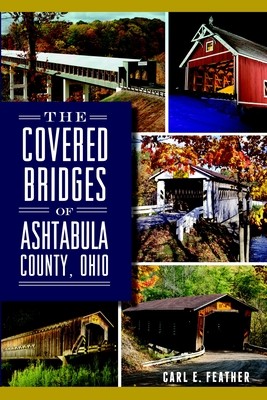
- We will send in 10–14 business days.
- Author: Carl E Feather
- Publisher: History Press
- Year: 2014
- Pages: 144
- ISBN-10: 1626192618
- ISBN-13: 9781626192614
- Format: 15.2 x 22.6 x 1.3 cm, softcover
- Language: English
- SAVE -10% with code: EXTRA
Reviews
Description
When its first covered bridge was constructed on the Ashtabula-Trumbull Turnpike in 1832, Ashtabula County was closer to frontier than a new Connecticut. Its rutted roads promised adventure and suggested prosperity but also great hardship. Covered bridges, made mostly of local timber, would eventually soften the brutality of travel, isolation and a well-watered landscape. Their proliferation and preservation gave Ashtabula County the nickname Covered Bridge Capital of the Western Reserve. Admire both famous and forgotten crossings with Carl E. Feather, who has spent over a quarter century mired in muddy creek beds, camera in hand, waiting for the perfect light.
EXTRA 10 % discount with code: EXTRA
The promotion ends in 18d.05:41:39
The discount code is valid when purchasing from 10 €. Discounts do not stack.
- Author: Carl E Feather
- Publisher: History Press
- Year: 2014
- Pages: 144
- ISBN-10: 1626192618
- ISBN-13: 9781626192614
- Format: 15.2 x 22.6 x 1.3 cm, softcover
- Language: English English
When its first covered bridge was constructed on the Ashtabula-Trumbull Turnpike in 1832, Ashtabula County was closer to frontier than a new Connecticut. Its rutted roads promised adventure and suggested prosperity but also great hardship. Covered bridges, made mostly of local timber, would eventually soften the brutality of travel, isolation and a well-watered landscape. Their proliferation and preservation gave Ashtabula County the nickname Covered Bridge Capital of the Western Reserve. Admire both famous and forgotten crossings with Carl E. Feather, who has spent over a quarter century mired in muddy creek beds, camera in hand, waiting for the perfect light.


Reviews